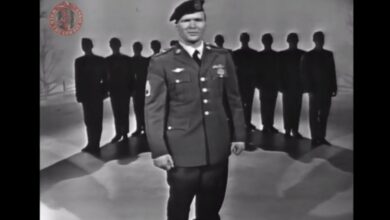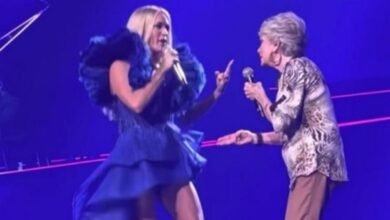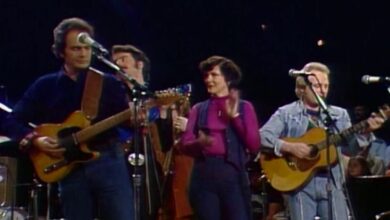Recall the iconic dance moves of the 1950s? A syncopated rhythm and energetic spins!
In February 1958, a vibrant dance craze exploded across American high school gyms and sock hops, capturing the joyful essence of early rock ‘n’ roll. Known as “The Stroll,” this dance quickly became emblematic of youthful energy and social connection. Originating from African American communities, The Stroll garnered fame via television, especially through the popular program “American Bandstand,” hosted by Dick Clark. This exposure enabled teenagers from various backgrounds to observe and adopt the dance at their local gatherings, transforming it into a shared cultural phenomenon that mirrored the evolving landscape of youth engagement in mid-20th-century America.
The Stroll is defined by its simple yet engaging format that promotes improvisation and personal expression, all within a communal environment. Dancers arranged themselves in lines facing one another, generating a vibrant social setting where couples alternated stepping into the center aisle. As they moved down the middle, they added their own creative touches, allowing for the display of individual styles within the group dance. This format not only encouraged self-expression but also signified a burgeoning independence among young people eager to carve out their identities amidst the cultural shifts of the time.
The success of The Stroll was closely tied to the rise of rock ‘n’ roll music, known for its infectious rhythms and lively tunes. The song “The Stroll,” performed by the Canadian group The Diamonds, played a crucial role in embedding the dance into popular culture. With their smooth harmonies and vibrant doo-wop sound, The Diamonds delivered a version that resonated with audiences eager for fresh musical experiences. The lively energy of the song combined with the upbeat dance movements created a dynamic synergy that animated social events throughout the late 1950s.
Dave Somerville, the lead vocalist of The Diamonds, emerged as a cultural icon of this vibrant era. His rich baritone voice produced memorable melodies that not only entertained but also motivated teenagers to hit the dance floor. Somerville’s charismatic performances embodied the carefree spirit of the time, capturing the aspirations of a generation eager to express its newfound freedoms. As teens across the nation learned the steps to The Stroll and sang along to the catchy lyrics, Somerville and The Diamonds left a lasting impact on the cultural landscape of the decade, marking a significant chapter in music history where rhythm and melody facilitated avenues for self-discovery and connection.
With its rapid rise in popularity, The Stroll became a beloved feature at social events—ranging from school dances to local community gatherings. Its universal appeal transcended racial and social divisions, uniting young people amid a period marked by significant societal challenges. The dance’s accessible nature allowed virtually anyone to learn the steps quickly, making it a favorite among teenagers eager to engage with the latest trends. Moreover, the dance exuded a sense of “cool” that attracted youth, symbolizing an era when young individuals actively claimed their identities through music and movement. With dance floors filled with teens dressed in their finest attire, they embraced opportunities to exude confidence and celebrate the optimistic spirit of post-war America.
Additionally, The Stroll mirrored larger societal changes, serving as a precursor to the transformations occurring in American society. In the midst of the civil rights movement of the 1950s, dance venues provided a rare space for young people of diverse backgrounds to mingle and connect. Through the rhythm of The Stroll, teenagers exchanged more than just dance steps; they forged friendships and shared joy, showcasing a cultural longing for unity against the backdrop of racial tensions. The Stroll became a microcosm of broader social evolution, illustrating how youth created spaces for expression and enjoyment in the face of societal constraints.
The influence of The Stroll reached far beyond its initial success, resonating through various aspects of American pop culture. Its frequent appearances on television and music variety shows solidified its place in collective memory, underscoring its role in shaping youth culture. What began as a popular dance among young people soon caught the attention of adults, who enjoyed watching their children partake in such lively and wholesome celebrations. This intergenerational appreciation reflected a growing cultural value placed on youth expression and leisure, further establishing The Stroll as a cultural artifact of youthful exuberance.
Even decades later, traces of The Stroll’s legacy can still be felt in contemporary dance trends, highlighting its enduring influence on social dancing. Elements of The Stroll can be found in many modern dance styles, showcasing its lasting impact as a form of joyful group participation and personal expression. Today, the spirit of The Stroll continues to thrive at gatherings and celebrations, uniting people in the joy of music, movement, and community, illustrating the timeless nature of group dance.
In examining the cultural significance of The Stroll, it becomes evident that it represents more than a fleeting trend; it encapsulates a pivotal moment in American history when music, dance, and youthful expression converged. The Stroll captures the spirit of an era marked by introspection and change, serving as a potent reminder of how music and movement can transcend societal boundaries and foster connections among diverse groups. Whether showcased in polished televised performances or joyfully embraced at casual gatherings, The Stroll symbolizes a cultural revolution where joy, creativity, and identity affirmation flourished.
As a key element in understanding the evolution of social interactions and cultural identities, The Stroll embodies the inherent human desire for connection through shared experiences. The pleasure of dancing together and celebrating life’s simple joys continues to resonate through generations, underscoring how music, movement, and collective expression intertwine to form the fabric of human experience. In this way, The Stroll remains not only a significant relic of its time but also a lasting inspiration for future generations, nurturing the universal language of dance and the spirit of youth.





